UND puts Humvee through its paces, assisted by minivan mom: Me
The University’s multiyear research could change the engineering of frontline military vehicles, as I can explain (if I survive)
DISTRIBUTION STATEMENT A. Approved for public release; distribution is unlimited. OPSEC#7984.
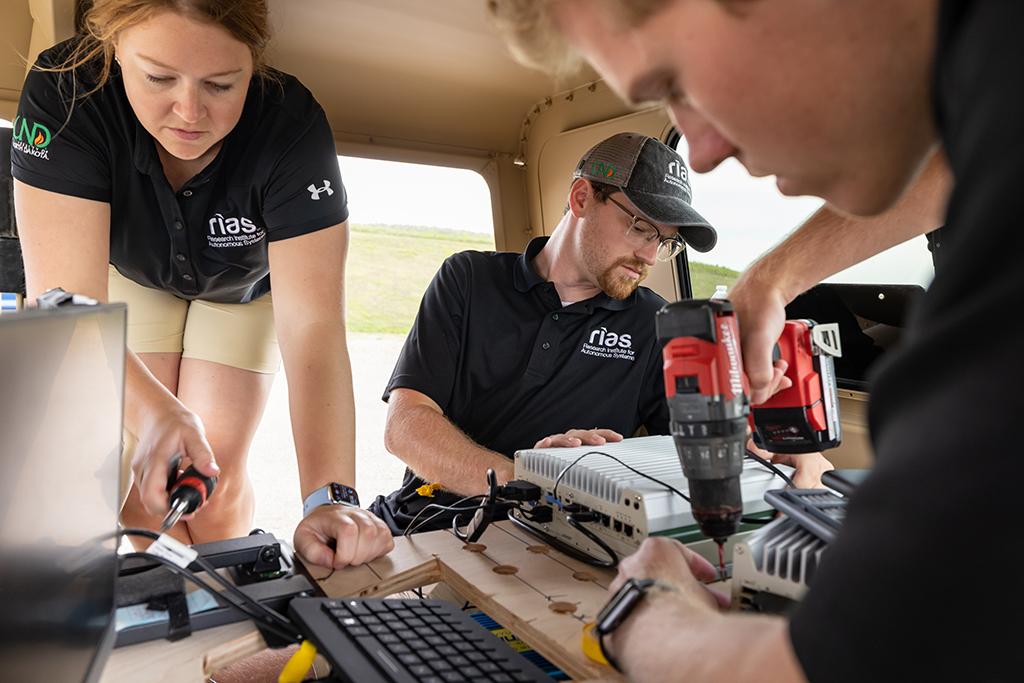
Editor’s note: In the UND LEADS Strategic Plan, the Discovery core value calls on the University to “infuse creative expression, critical inquiry and innovation across the students’ learning journeys by supporting comprehensive curricular and co-curricular participation in research..” The story below, which UND Today first printed on Oct. 19, spotlights one of the University’s latest efforts to let students gain experience by conducting real-world research.
****
Understand, I may be the least military-minded person in the Dakotas.
A Flight Suit is the stretchy pants and slouchy sweater I wear when I take Delta to the Twin Cities, and a High-Value Target is the ritzy Edina big-box store where I like to shop and sip Starbucks when I get there.
So how did I wind up here: navigating a Humvee through the grasslands of a North Dakota National Guard training base, all the while trying to skirt simulated minefields and avoid drawing “enemy” fire?
The answer is that UND research can take its participants to the far corners of the Earth. And in my case, it took me to Camp Grafton South, a 10,000-acre training site southeast of Devils Lake, N.D.
That’s where UND engineers, computer scientists, psychologists and others are working to develop a “heads-up” windshield display for the military. And that’s where — both to take part in this research and then write about it for UND Today — I volunteered to help.
“Help!” is just what I found myself wanting to yell, too, as my tablet with its map of our route kept freezing as our Humvee jolted through every remote dip and raised dust rounding every prairie curve. I sure could use a heads-up display right about now, I thought to myself with a rueful grin.

But tracking how Humvee teams respond to such stress was the point of the whole exercise, I knew. So we soldiered on — “we” being myself, the vehicle’s operator, and the two UND researchers in the back seat who were recording our every move.
“This multiyear project is all about the ‘human-machine team,’” Philip Brandt, senior research scientist with UND’s Research Institute for Autonomous Systems, had explained earlier.
Brandt is a retired Air Force lieutenant colonel and former Global Hawk pilot, so he’s all about the human-machine interface. “And moving into our future, it’s very clear to me that the friction between humans and machines operating together needs to be addressed,” he said.
“This project is about figuring out how humans and machines can ideally work together to complete tasks and create better capability, capacity, effectiveness and efficiency of operation.”
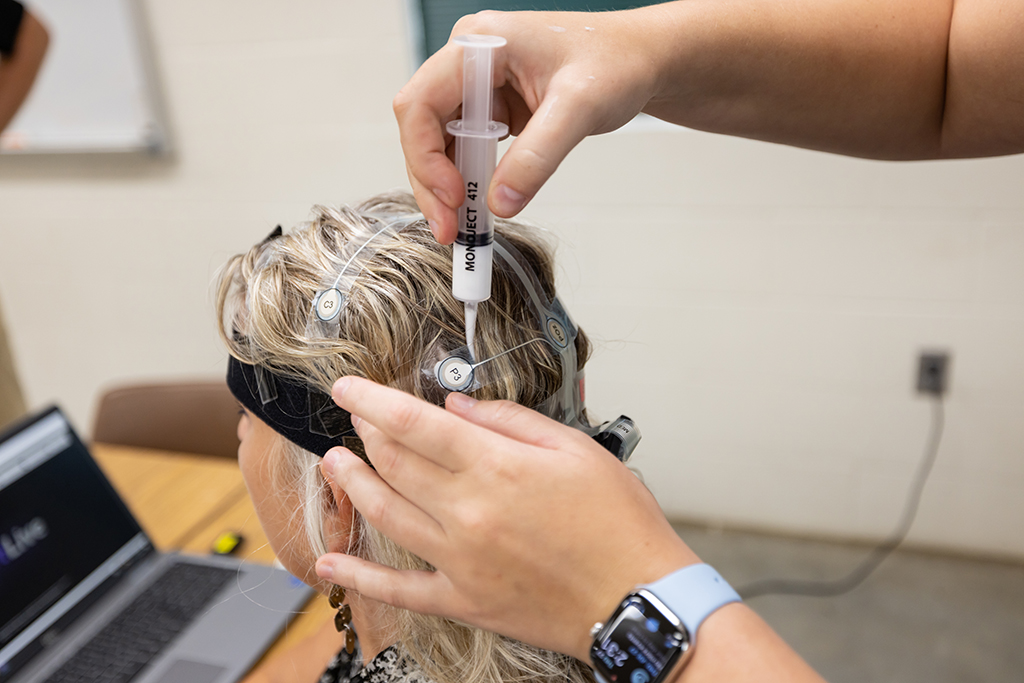
Two heads (or 20) are better than one
That explains why I had electrodes stuck all over my head and multiple Smart Eye eye-tracking cameras following my every gaze. Yet another sophisticated software program captured my every facial expression like a human mood ring. In fact, the integrated system could tell not only if and when I was looking down at my tablet or out the window, but also — by micro-measuring the distance between my pupils — whether I was focusing on the Humvee’s side mirror, say, rather than a smidge to the right at the herd of cattle on the horizon.
And that volume of detailed data is what’s needed in order to measure and mitigate the heavy task load on Humvee teams — the ultimate multitaskers, Brandt said. The idea is to figure out what tools will help the teams make the best decisions under the extraordinary stress of combat, just like speedometers and fuel indicators help us Nordstrom warriors drive.
Then that knowledge, in turn, will lead to the best possible heads-up display. And ideally, it’ll be one that not only Humvee operators can use during times of combat, but also National Guard crews while rescuing stranded flood victims during a dark and stormy night.
“I love this project because it’s UND at its best,” Brandt said.
For one thing, the Humvee work is bringing together students and faculty members from multiple disciplines across campus and putting their great skills to terrific use.
For another, “this project exemplifies UND’s experiential learning because it’s letting graduate students and undergraduates alike contribute to a real-world need presented by their nation,” he said.
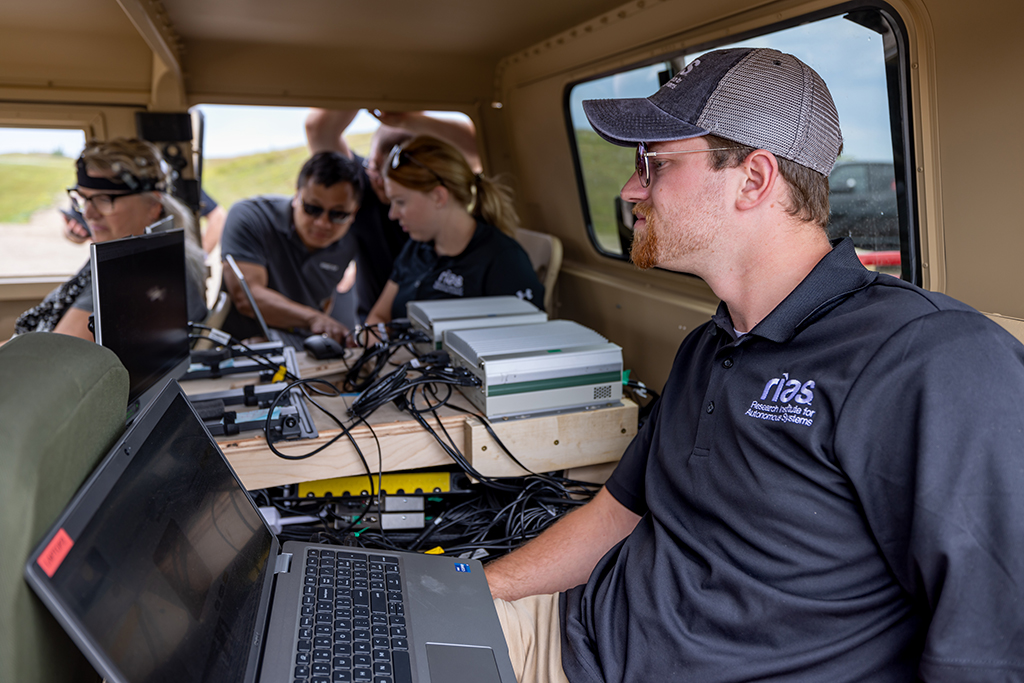
Just the right size for big things
“And the ‘big enough, small enough’ size of UND and North Dakota’s research ecosystem makes success a real possibility. We’re big enough to provide the opportunities, and small enough to act fast and ensure that our efforts are making a difference.”
Luke Gietzen agreed. A research assistant and UND graduate student in Clinical Psychology, Gietzen was one of the team members in the back of the Humvee, watching the motherlode of data collect before his eyes. Thanks to the vehicle’s integrated tracking systems, Gietzen and his partner — as well as everyone back at headquarters — knew the exact second our operator was startled by a bird flying out of the brush, for example. And they saw my brainwaves bounce even before I had a chance to say a peep (or was it a scream) in defense of the duck I thought we’d surely flatten.
“It’s kind of surreal to be in this position. I can’t even put into words how crazy it feels to be on a project of this magnitude,” Gietzen said. “I’m guessing there’s a very small percentage of grad students in the world, to be honest, who’ve experienced this level of financial backing and support from their state, institution and faculty.
“It feels pretty special to have so many people who have faith in all of us and trust that we can do this cutting-edge research as students.”
In the vehicle’s front seats, driver James Owens — himself a research assistant and grad student in Forensic Psychology — and myself had been tasked with a 30-minute “get in-get out” mission.
Owens also happens to be a U.S. Army veteran, so I figured he’d likely been around the block a few times and probably didn’t need too much assistance from me. At least I’d be in safe company if anything went awry.
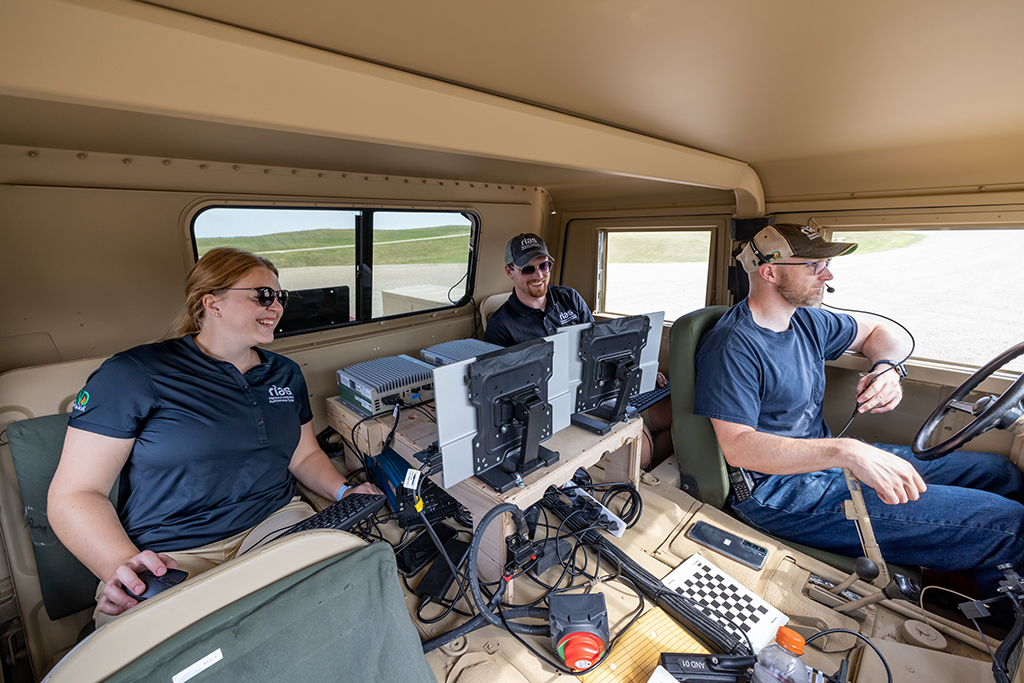
Operate. Navigate. Communicate.
As the so-called A-driver — or assistant driver in military lingo — that’s what I was supposed to do: help Owens with operating, navigating and communicating, so he could pay attention to the road while we maneuvered through unfamiliar and “hostile” territory to deliver food and life-saving medical supplies to another camp, without hitting any minefields (orange cones) or drawing the ire or fire of the bad guys (who instead of black hats were represented by white pickups).
It was a wild ride and incredibly fun. Moreover, the data gained from the eye tracking, emotion charting and EEG measuring ultimately could help soldiers stay safe and on task with fewer distractions and less stress in the field, Brandt underscored later.
“I learned, or rather confirmed, that this team is dedicated, resilient, resourceful and amazingly talented,” he said.
For example, no matter how large or weird the obstacle — or how frustrating or miserable the conditions the team encountered during the four days they were at Camp Grafton South — the students worked together to figure it out.
“They powered through plenty of stress-testing,” and not just of the Humvee operators, Brandt said. “Especially on the third day, when the heat index was 105 degrees, we had no air-conditioning in our building and they had to sit in that idling Humvee, baking in the sun while they figured out how to keep the computers from crashing.”
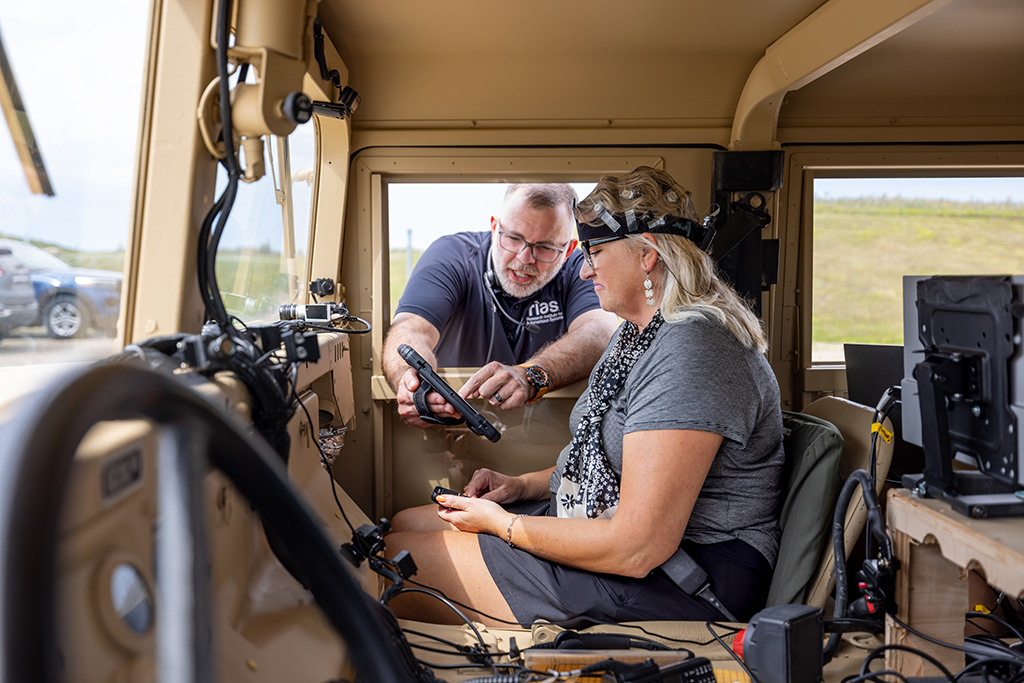
“These students are wise and mature beyond their years,” he continued. And in addition, “their soft skills — awareness, communication and empathy — were on full display all week.”
For research assistant and Experimental Psychology graduate student Jessica Van Bree, that need to use both hard and soft skills to solve problems proved enlightening. The project’s many hours of fieldwork had provided more than enough eye-opening moments, she said.
“Doing research in the lab setting is different because it feels like you have infinite time and resources to fix things,” she said. “Out there, we had to get comfortable going with the flow. When there was a problem, it wasn’t just one team dominating. Everyone was throwing out ideas to come up with one collective solution.
“That was a bit of a reality check for those of us who are used to taking our time to perfect things.”
After the live-drive experiment, the students and the pros from Smart Eye gave me another classroom briefing to explain how the science works.
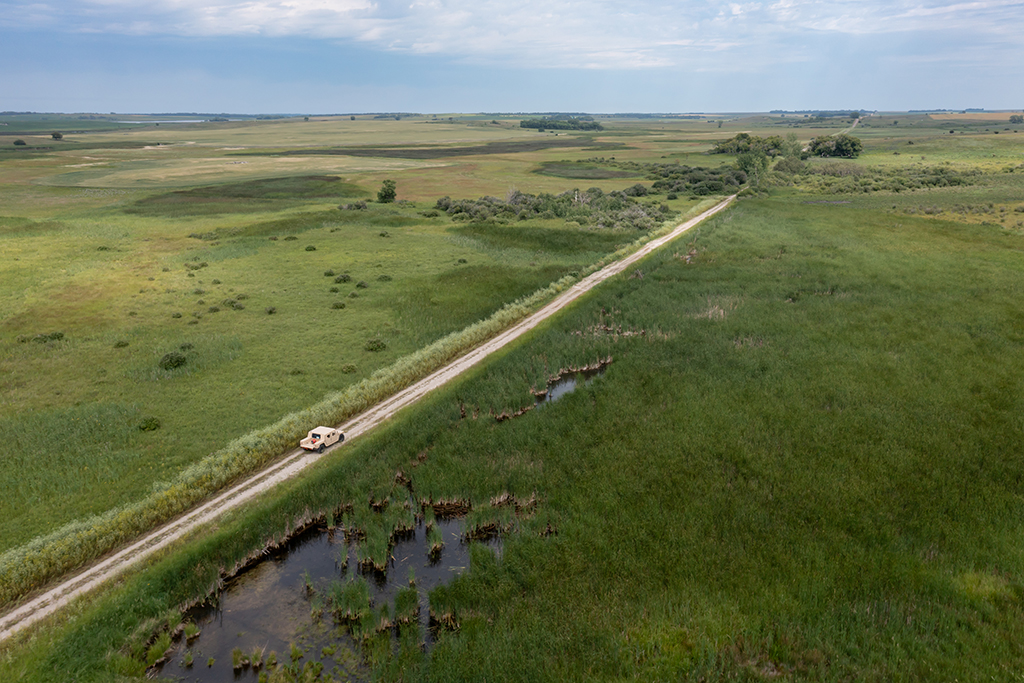
I wound up convinced. This is amazing UND research that could lead to groundbreaking advances in vehicular design. For the military, picture an augmented reality, 3D-like display on the windshield, one that will let operators navigate safely even in the zero visibility of a sandstorm. (Upcoming research will supplement map data with info from topography-scanning UAVs.)
It could alert the Humvee drivers to snipers or troop movements up ahead. And back here at home, as mentioned, it could alert rescue crews to avoid roads blocked by power lines or tornado-downed trees.
“If everything goes the way everyone wants and we’re able to implement all of this knowledge, we’ll literally be able to change the engineering of the military’s future frontline tactical vehicles,” Gietzen said.
“Hopefully, people will look back 20 years from now and say, ‘Who the hell came up with putting this heads-up display in a Humvee?’ And I can answer, ‘You know, I was on the team that did that in little old North Dakota, at UND.’”
>> SMART EYE BLOG TOUTS UND RESEARCH. Read what Smart Eye had to say.
>> DO YOU WANT TO LEARN MORE? UND and RIAS need motivated students to “throw their hats in the ring” and contribute, Brandt said. “We can shape the opportunity to be beneficial to the project and the learner, but we need students to start that partnership by stepping up and saying ‘I’m in. What can I do? What can I learn? How can I help you to help me be a better leader in action?’ That all can start here.”
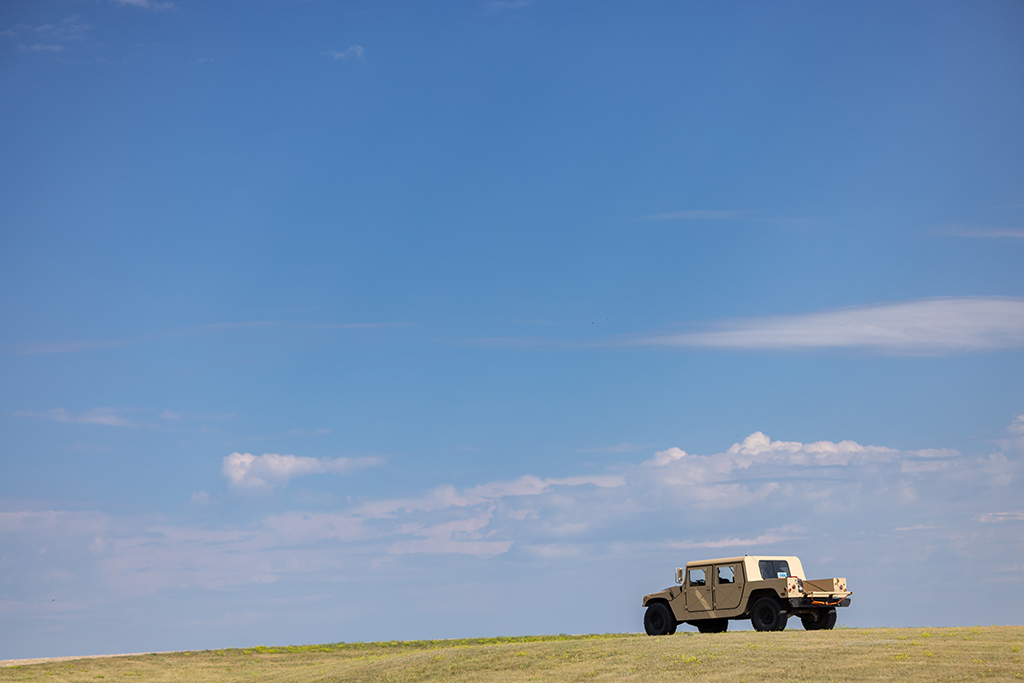
DISTRIBUTION STATEMENT A. Approved for public release; distribution is unlimited. OPSEC#7984.
****
>> QUESTIONS OR COMMENTS about the UND LEADS Strategic Plan? Your thoughts are welcome! Please contact Angie Carpenter, UND’s director of Special Student Populations, and/or Ryan Zerr, associate vice president for Strategy & Implementation, the co-chairs of the UND LEADS Implementation Committee.
You also may offer your thoughts by visiting the UND LEADS Strategic Plan home page and clicking on the “Provide your feedback” link that you’ll find there.
Thank you for your support of the UND LEADS Strategic Plan!



